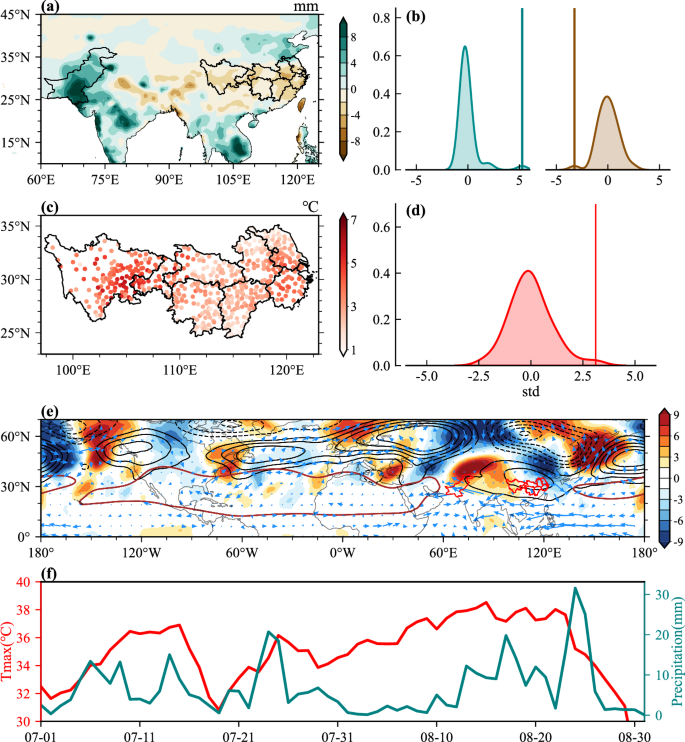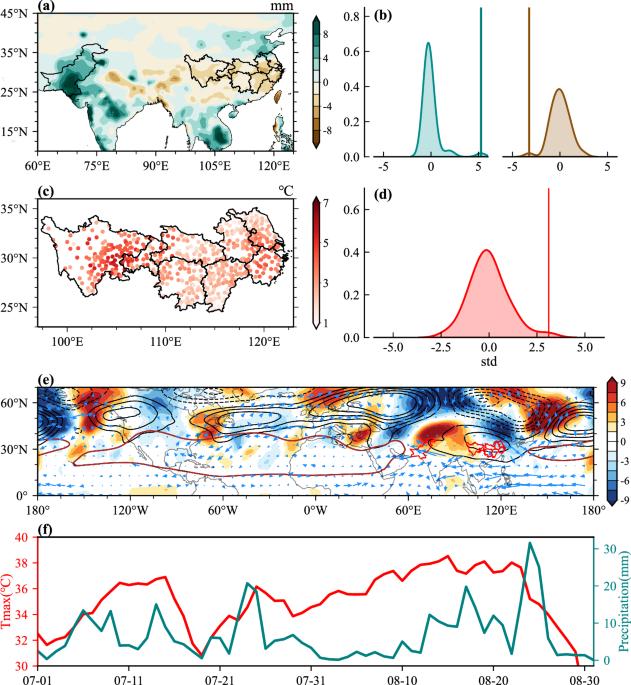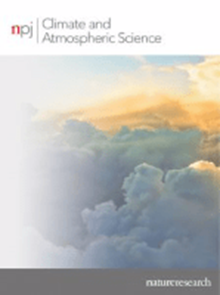巴基斯坦 2022 年同期极端降水和长江流域热浪背后的多尺度相互作用
IF 8.5
1区 地球科学
Q1 METEOROLOGY & ATMOSPHERIC SCIENCES
引用次数: 0
摘要
2022年7月至8月,巴基斯坦出现了前所未有的极端降水,长江流域持续出现特大热浪。利用先进的基于多尺度窗口变换的典型传递归因框架,我们定量划分了导致2022年破纪录的空间并发极端事件的尺度内和尺度间相互作用,并全面揭示了影响7月和8月极端事件的动态过程差异。基本流尺度窗口失去了可用势能(APE),通过APE向季节内尺度和同步尺度窗口的典型转移,基本流尺度的尺度间动力过程和气压不稳定性维持了7月的并发极端事件。8 月,爆发性的同步尺度动能辐合为 YRV 的下沉运动及其从印度洋向北太平洋的平流提供了动力条件。因此,高频和低频过程之间的相互作用推动了夏季的大气环流,但 8 月份的高频过程在极端事件中发挥了至关重要的作用。此外,热带中西部太平洋的热源被认为是局部重复爆发能量的关键驱动因素之一。这项研究既强调了大气动力学多个尺度之间的相互作用,又揭示了气候变暖对极端事件影响背后的驱动机制,将外部强迫问题与大气内部不稳定的自由问题联系起来。本文章由计算机程序翻译,如有差异,请以英文原文为准。


Multiscale interaction underlying 2022 concurrent extreme precipitation in Pakistan and heatwave in Yangtze River Valley
Unprecedentedly extreme precipitation occurred in Pakistan (PAK), and mega heat waves persisted along the Yangtze River Valley (YRV) from July to August 2022. Using the advanced multiscale window transform-based canonical transfer attribution framework, we quantitatively delineated intra-scale and inter-scale interactions leading to record-breaking spatially concurrent extremes in 2022 and comprehensively revealed differences in dynamic processes affecting extreme events in July and August. The basic flow scale window lost the available potential energy (APE), and through APE canonical transfers to the intraseasonal-scale and synoptic-scale windows, the inter-scale dynamic processes and barotropic instability of the basic flow scale preserved the concurrent extreme in July. In August, the eruptive synoptic-scale kinetic energy convergence provided dynamic conditions for the sinking motion of the YRV and its advection to PAK from the Indian Ocean. Consequently, the interaction between high- and low-frequency processes drove atmospheric circulation in summer, but the high-frequency process in August played a vital role in extreme events. Additionally, the heat source in the tropical western-central Pacific is considered one of the key drivers for localized repetitive bursts of energy. This study emphasizes both the interactions between multiple scales of atmospheric dynamics and reveals the driving mechanisms behind the impacts of warming on extreme events, linking the external forcing issue with the free problem of atmospheric internal instability.
求助全文
通过发布文献求助,成功后即可免费获取论文全文。
去求助
来源期刊

npj Climate and Atmospheric Science
Earth and Planetary Sciences-Atmospheric Science
CiteScore
8.80
自引率
3.30%
发文量
87
审稿时长
21 weeks
期刊介绍:
npj Climate and Atmospheric Science is an open-access journal encompassing the relevant physical, chemical, and biological aspects of atmospheric and climate science. The journal places particular emphasis on regional studies that unveil new insights into specific localities, including examinations of local atmospheric composition, such as aerosols.
The range of topics covered by the journal includes climate dynamics, climate variability, weather and climate prediction, climate change, ocean dynamics, weather extremes, air pollution, atmospheric chemistry (including aerosols), the hydrological cycle, and atmosphere–ocean and atmosphere–land interactions. The journal welcomes studies employing a diverse array of methods, including numerical and statistical modeling, the development and application of in situ observational techniques, remote sensing, and the development or evaluation of new reanalyses.
 求助内容:
求助内容: 应助结果提醒方式:
应助结果提醒方式:


